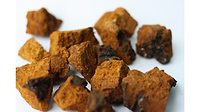
"Any process involving fruit juices has the potential to be messy," explained T.J. Couzens, vice president and general manager of Italian ice and frozen juice bar maker MIA Products. "Manufacturers of frozen novelties must run batch mixes through the process lines before they reach the freezing rooms. The sugars in the juice can make cleaning process lines difficult."
That's why J&J Snack Foods, a division of MIA, specified a central CIP system and automated production line for its production facility in Scranton, Pa. The Tri-Clover CIP System was installed in 1998 as part of an expansion project that doubled the size of the Scranton facility. Since completing the project, J&J has more than tripled production at the site.
Having produced frozen juice bars for the food service industry for more than 10 years, J&J emerged as the nation's largest manufacturer of Italian ices and frozen fruit confections after acquiring Mazzone Enterprises in 1996 and MAMA TISH's in 1997. Company growth and the need to dramatically increase production prompted J&J to undertake the Scranton expansion.
Oliver M. Dean Corporation, a Tri-Clover distributor in Worcester, Mass., worked extensively with J&J representatives in designing a system that addressed production and CIP requirements. Expansion of the facility to approximately 46,000 square feet began in late 1997. The process line installation was completed in April 1998. "They kept the existing batch tanks, but nearly every other component was assessed and changed based on automation and CIP,'' noted Tony Fiore, an Oliver M. Dean representative who coordinated the project. Decisions were based on production needs and cleaning demands consistent with J&J's emergence as a leading processor of frozen confections.
In addition to increasing production, the automated system has increased product consistency. Governed by WonderWare software, the program seamlessly controls MIA's batch making process, which was previously a manual operation. As a result of automating the process, MIA has achieved batch repeatability and pacing without chronic adjustments, Fiore said. "The focus is on product quality and consistency," he noted.

These stainless steel components provide "reliability through repeatability", Couzens pointed out. And the ease of cleaning the valves, he added, "makes them productive day in and day out."
Powder horns on the front of each of the vats are used for adding dry ingredients, including citric acid and ascorbic acid, into the liquid mixtures.
Because J&J considers quality assurance an important step, no batch can be released into production until the adjoining test laboratory has checked and approved it for production. Once the lab approves the batches, operators unlock the computer system, releasing the product for production. The mix is then pumped to 1,000-gallon storage tanks before being sent to continuous freezers, where the product is taken from 38 degrees F to a semi-frozen consistency of approximately 24 degrees F. From the freezer, the mix is transferred to filling machines where it is packaged in cups, squeeze-up tubes and three-gallontubs before being shipped to spiral blast freezers.
Meeting the facility's stringent production requirements not only involved the application of automation, but also more efficient CIP methods. "We used to wash old lines manually before switching batches," Couzens elaborated. "Without having to manually construct the CIP loops, we've vastly accelerated our clean time. Now, with our two separate line circuits, we can use one line while mixing another batch on the other, and switching back and forth between the two. Every way you look at it, it's a smoother operation."
More than 150 million frozen novelties are processed through this system as part of a three-shift operation. More than 1 million cases of LUIGI's Italian Ice and 750,000 cases of Shape-Ups -- a frozen juice bar -- are produced annually.
Tri-Clover, 9201 Wilmot Rd, Kenosha, WI 53141-1413. Tel. 414-694-5511; www.tri-clover.com

